-
 bitcoin
bitcoin $118548.520763 USD
3.67% -
 ethereum
ethereum $4352.564943 USD
4.79% -
 xrp
xrp $2.964058 USD
4.22% -
 tether
tether $1.000565 USD
0.05% -
 bnb
bnb $1028.372955 USD
1.46% -
 solana
solana $221.373507 USD
6.00% -
 usd-coin
usd-coin $0.999933 USD
0.02% -
 dogecoin
dogecoin $0.248633 USD
6.85% -
 tron
tron $0.341444 USD
2.38% -
 cardano
cardano $0.852946 USD
5.82% -
 hyperliquid
hyperliquid $47.869306 USD
6.15% -
 chainlink
chainlink $22.561476 USD
6.01% -
 ethena-usde
ethena-usde $1.001258 USD
0.05% -
 avalanche
avalanche $30.660000 USD
2.06% -
 stellar
stellar $0.400917 USD
9.76%
how to mine ethereum classic
To begin mining Ethereum Classic (ETC), select a mining pool, configure your mining software with the pool address and your wallet address, and start solving complex mathematical problems to earn rewards.
Oct 19, 2024 at 04:00 pm
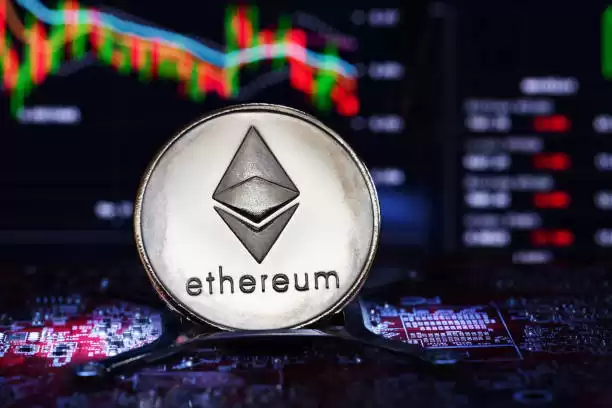
A Comprehensive Guide to Mining Ethereum Classic (ETC)
1. Choose a Mining Hardware
- GPU (Graphics Processing Unit): Ethereum Classic is most efficiently mined using GPUs with ample video memory (VRAM).
- ASIC (Application-Specific Integrated Circuit): ASICs are custom-designed chips specifically built for Ethereum Classic mining and offer higher hashrates with optimized power consumption.
2. Select a Mining Software
- GMiner: Popular for its user-friendly interface and efficiency.
- Ethminer: Open-source and widely used, but can be more complex to configure.
- LolMiner: Suitable for both GPUs and ASICs, with advanced performance tuning options.
3. Create a Mining Pool Account
- A mining pool combines the hashrate of multiple miners and distributes the rewards proportionally based on contributions.
- Choose a reputable mining pool with stable payouts and low fees.
- Some popular options include Ethermine, Nanopool, and 2Miners.
4. Configure Your Mining Software
- Download and install the selected mining software.
- Create a configuration file specifying the mining pool address, your wallet address, and any other necessary parameters.
- Ensure that your hardware meets the software's requirements.
5. Start Mining
- Run the mining software with the appropriate configuration file.
- Your hardware will start solving complex mathematical problems to validate transactions on the Ethereum Classic blockchain.
- Each successfully mined block earns you a reward in ETC.
6. Withdraw Your Earnings
- Mining pools typically pay out rewards at regular intervals, usually weekly or daily.
- You can withdraw your earned ETC to your chosen cryptocurrency wallet.
7. Monitor and Optimize Your Mining Rig
- Track your hashrate, power consumption, and profitability using monitoring software or tools provided by the mining pool.
- Adjust your configuration to maximize efficiency and profitability.
- Regularly update your mining software and hardware to stay competitive.
Additional Tips:
- Consider hardware overclocking to increase hashrate, but be mindful of potential risks to hardware stability.
- Experiment with different mining algorithms to optimize profitability based on your hardware's capabilities.
- Join mining communities and forums to share knowledge and troubleshooting techniques.
Disclaimer:info@kdj.com
The information provided is not trading advice. kdj.com does not assume any responsibility for any investments made based on the information provided in this article. Cryptocurrencies are highly volatile and it is highly recommended that you invest with caution after thorough research!
If you believe that the content used on this website infringes your copyright, please contact us immediately (info@kdj.com) and we will delete it promptly.
- BlockDAG, DOGE, HYPE Sponsorship: Crypto Trends Shaping 2025
- 2025-10-01 00:25:13
- Deutsche Börse and Circle: A StableCoin Adoption Powerhouse in Europe
- 2025-10-01 00:25:13
- BlockDAG's Presale Buzz: Is It the Crypto to Watch in October 2025?
- 2025-10-01 00:30:13
- Bitcoin, Crypto, and IQ: When Genius Meets Digital Gold?
- 2025-10-01 00:30:13
- Stablecoins, American Innovation, and Wallet Tokens: The Next Frontier
- 2025-10-01 00:35:12
- NBU, Coins, and Crypto in Ukraine: A New Yorker's Take
- 2025-10-01 00:45:14
Related knowledge
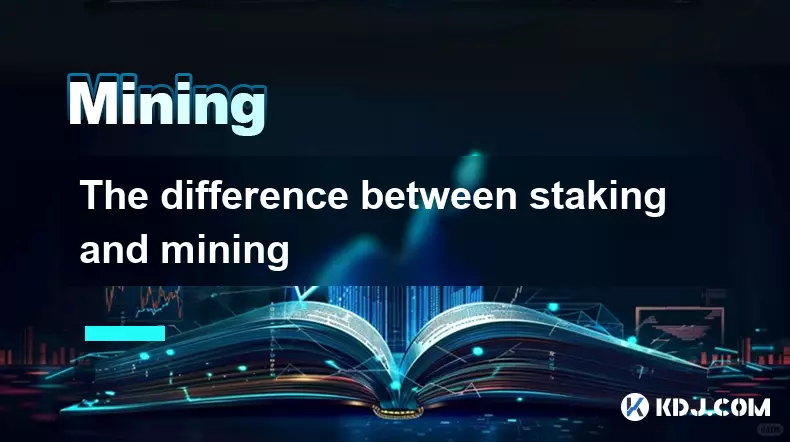
The difference between staking and mining
Sep 24,2025 at 05:18am
Understanding Staking in the Cryptocurrency Ecosystem1. Staking involves holding funds in a cryptocurrency wallet to support the operations of a block...
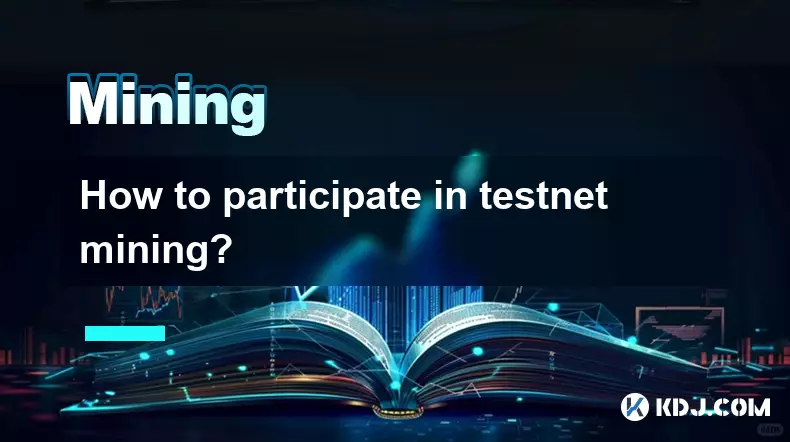
How to participate in testnet mining?
Sep 22,2025 at 09:18am
Understanding Testnet Mining in the Crypto Ecosystem1. Testnet mining is a method used by blockchain developers to simulate real-world conditions on a...

How to dispose of abandoned mining machines?
Sep 19,2025 at 08:19pm
Assessing the Condition of Abandoned Mining Rigs1. Begin by inspecting each mining machine for visible damage, corrosion, or missing components. Machi...

How to identify high-quality mining pools?
Sep 21,2025 at 03:19pm
Reputation and Track Record1. A mining pool’s reputation is built over time through consistent performance and transparency. Pools that have operated ...
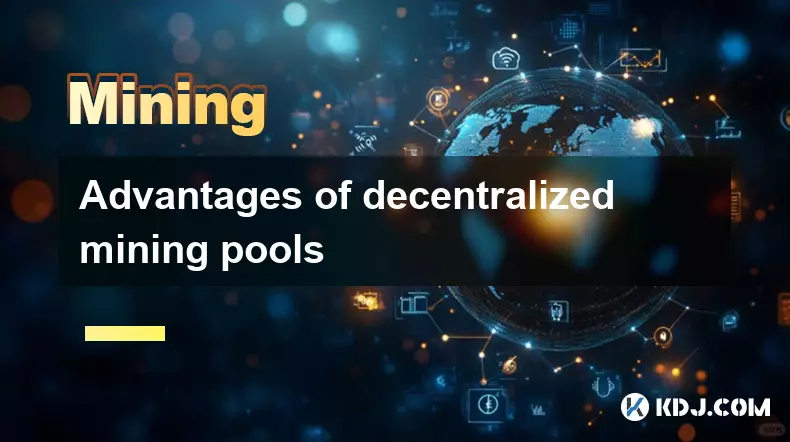
Advantages of decentralized mining pools
Sep 20,2025 at 04:36pm
Enhanced Security and Resistance to Censorship1. Decentralized mining pools operate on blockchain-based smart contracts, eliminating the need for a ce...
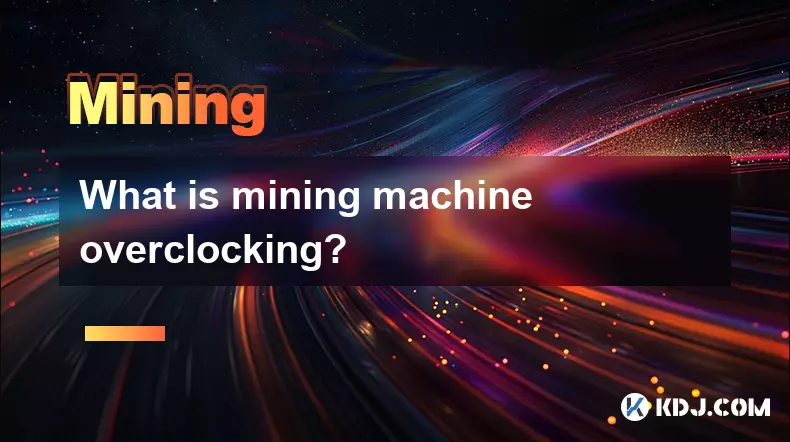
What is mining machine overclocking?
Sep 21,2025 at 07:19pm
Understanding Mining Machine Overclocking1. Mining machine overclocking refers to the process of increasing the operating frequency of a cryptocurrenc...

The difference between staking and mining
Sep 24,2025 at 05:18am
Understanding Staking in the Cryptocurrency Ecosystem1. Staking involves holding funds in a cryptocurrency wallet to support the operations of a block...

How to participate in testnet mining?
Sep 22,2025 at 09:18am
Understanding Testnet Mining in the Crypto Ecosystem1. Testnet mining is a method used by blockchain developers to simulate real-world conditions on a...

How to dispose of abandoned mining machines?
Sep 19,2025 at 08:19pm
Assessing the Condition of Abandoned Mining Rigs1. Begin by inspecting each mining machine for visible damage, corrosion, or missing components. Machi...

How to identify high-quality mining pools?
Sep 21,2025 at 03:19pm
Reputation and Track Record1. A mining pool’s reputation is built over time through consistent performance and transparency. Pools that have operated ...

Advantages of decentralized mining pools
Sep 20,2025 at 04:36pm
Enhanced Security and Resistance to Censorship1. Decentralized mining pools operate on blockchain-based smart contracts, eliminating the need for a ce...

What is mining machine overclocking?
Sep 21,2025 at 07:19pm
Understanding Mining Machine Overclocking1. Mining machine overclocking refers to the process of increasing the operating frequency of a cryptocurrenc...
See all articles










































































